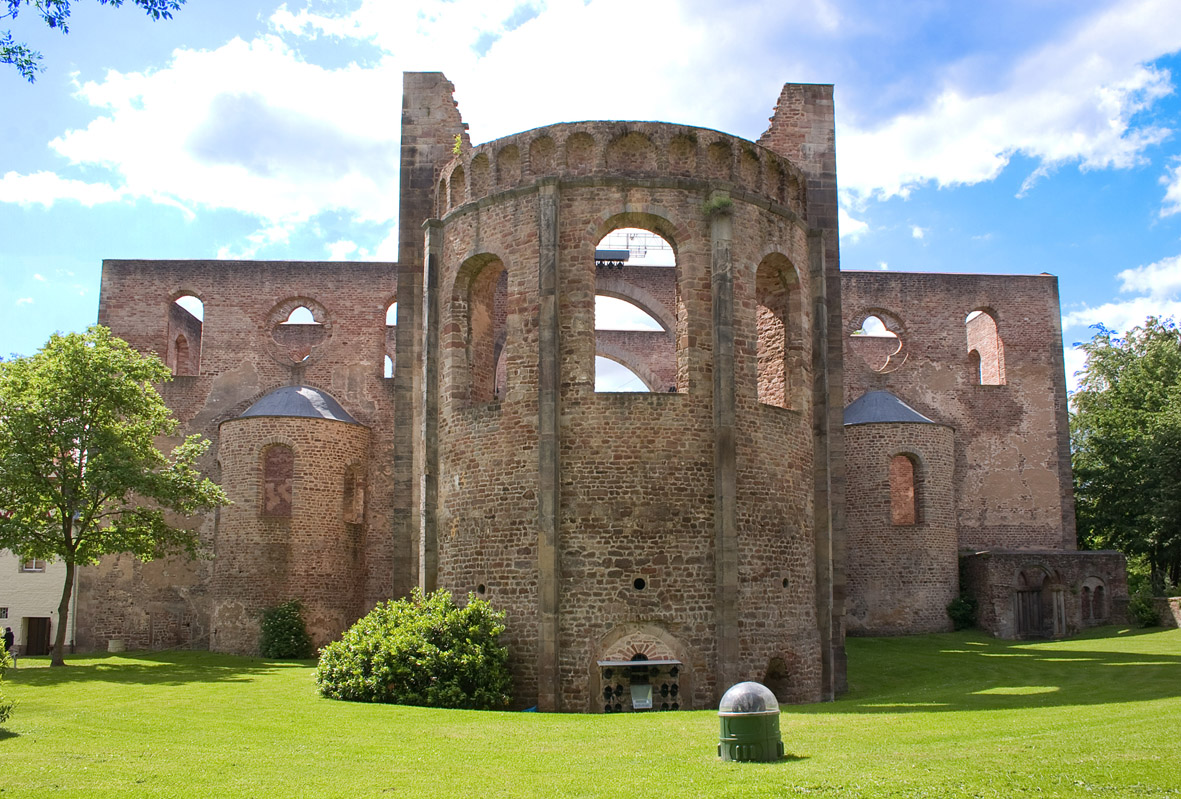 Bad Hersfeld is
a 29,944
inhabitants spa town by the river Fulda in the northeastern part of Hesse, Germany, not far from Thuringia. The town is know because of its festival and for having the abbey ruins, that are said to be Europe's biggest Romanesque church ruin.
Bad Hersfeld is
a 29,944
inhabitants spa town by the river Fulda in the northeastern part of Hesse, Germany, not far from Thuringia. The town is know because of its festival and for having the abbey ruins, that are said to be Europe's biggest Romanesque church ruin.
How do I arrive to Bad Hersfeld?
Bad Hersfeld isn't bad connected with other cities in Hesse and other states.
- Train: there are often trains to other destinations within Hesse like Bebra (aprox. 10 minutes), Fulda (aprox. 30 minutes), Melsungen (aprox. 35 minutes), Kassel (aprox. 1 hour), Alsfeld (aprox. 1 hour 10 minutes), Hanau (aprox. 1 hour 20 minutes) or Frankfurt am Main (aprox. 1 hour 40 minutes). There are also trains to destinations in other federal states such Eisenach (aprox. 1 hour 20 minutes) in Thuringia.
- Bus: there are buses to many cities in Hesse and neighbouring states.
- Car: having a car many destinations can be reached easily in Hesse such as Bebra (aprox. 20 minutes), Rottenburg an der Fulda (aprox. 25 minutes), Melsungen (aprox. 40 minutes), Alsfeld (aprox. 40 minutes), Fulda (aprox. 45 minutes), Kassel (aprox. 50 minutes), Gießen (aprox. 1 hour 10 minutes), Marburg (aprox. 1 hour 15 minutes), Hanau (aprox. 1 hour 25 minutes) or Frankfurt am Main (aprox. 1 hour 40 minutes).
History
The history of Bad Hersfeld began with St. Sturm (established a monastic settlement but later evacuated it to Fulda) and with Lullus, who reestablished Hersfeld Abbey in 769. Hersfeld was first mentioned as a town in 1170, at the time in which Hersfeld Abbey's greatest importance in Imperial politics. Beginning in 1373, the Landgraviate of Hesse acquired influence over the town through defensive alliances. Martin Luther visited the monastery on his way back from the Diet of Worms (1521) and about two years later, the town and the territory of the abbey was mostly Protestant. Great parts of the town and the abbey passed to Hesse due to the German Peasants' War in 1525 and in the Peace of Westphalia (1648), the Imperial Abbey was awarded to the Landgraviate of Hesse-Kassel. During the Seven Years' War the French army used the former abbey church as a supply and food depot, burnt by them in 1761. The town was almost destroyed by Napoleonic occupation troops in 1807 and in 1821, Hersfeld became the seat of its district in the Electorate of Hesse. The development into a spa town began when the Lullusbrunnen was tapped in 1904. In 1935 barracks was built in the outskirts of Hersfeld by the Wehrmacht, destroyed in 1945 and taken by the United States Army.
What can I visit in Bad Hersfeld?
Bad Hersfeld has a beautiful Alstadt, many nice buildings that are worth to have a look, like many half-timbered buildings
These are Bad Hersfeld's main attractions:
- Ruins of Hersfeld Abbey (10-17 Tue-Sun from Mar to Oct; 10-16 Tue-Sun from Nov to Feb; 5€/ 3€ adults/ reduced): remains of a former Romanesque monastery, first founded by St. Sturmius in 736 and destroyed in the Seven Years' War (1761), that are considered one of the largest Romanesque basilicas north of the Alps and now the largest Romanesque church ruin in the world. The complex has also the oldest dated bell in Germany, Lullusglocke, and it's home of the festival Bad Hersfeld Festival (July-August).
- Bad Hersfeld Town Museum (16-21 from Jul to Aug; 10-12 and 15-17 Tue-Sat, 11-17 Sun from Sep to Jun; ): museum located in the only surviving wing of the former abbey. It speaks about the history of the abbey and the town, having temporary exhibitions too.
- Konrad Duden Museum (15-17 Sun): small museum focused in Kornad Duden, a high school teacher who became a philologist that founded the well-known German language dictionary Duden (similar to Noah Webster in the United States) and taught in Bad Hersfeld.
- Bad Hersfeld Lutheran Church: Gothic three-aisled church first built in 1060 and rebuilt in the 15th century. The exterior has remained almost unchanged since then and it's quite highlighted by its tower. The interior was significantly changed by Calvinist iconoclasts and by at least two major fires.
- Town Hall of Bad Hersfeld: town hall first built in Gothic style in 1371 that suffered a reconstruction in Weser Renaissance style in 1607. It's located in the square Am Treppchen, a beautiful place with its Fachwerkhau and the fountain Lullusbrunnen.
- Bad Hersfeld Kurpark: relaxing spa park that is also the largest park in the town. It has a perennial garden was modeled on a Baroque garden that was located here in the mid-18th century
- Robert-Heil Tower: tower built by the Prussian court baker Robert Heil (who was native of Bad Hersfeld) that provides beautiful views of the town and Fulda valley.
- Eichhof Palace: Schloss built by the abbots of the Hersfeld Abbey. Initially wasa single-storey Gothic moated castle. but in the 16th century, the palace was expanded into a palace in the Renaissance style, becoming the abbots' summer residence. Since 2010 it's a branch of the Fraunhofer Institute for Wind Energy and Energy System Technology.
 |
| Façade of the Town Hall of Bad Hersfeld |
 |
| Rotenburg an der Fulda |
| Spangenberg Palace |
| Marktplatz and Melsungen Town Hall |
 |
| Marktplatz, Weinhaus and Alsfeld Town Hall |



 16:35
16:35
 Banknotemaniac
Banknotemaniac

 Posted in:
Posted in: